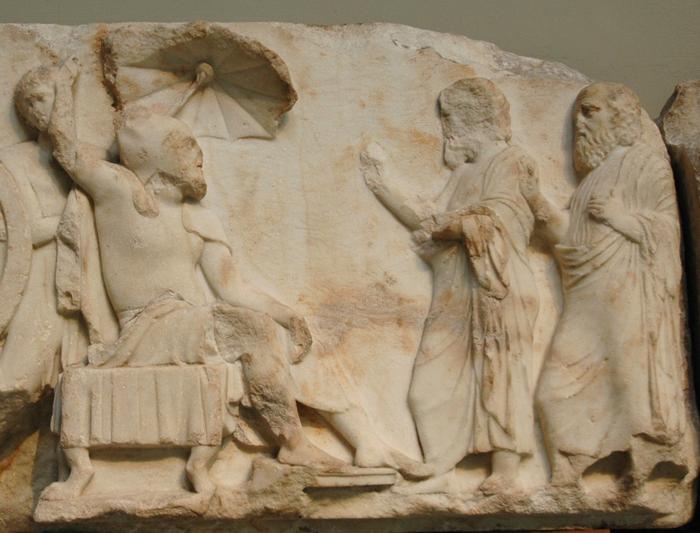Earth and water
Earth and water: symbol of surrender in the ancient Achaemenid empire.

The Persian custom to demand "earth and water" from subject people is known from the Histories by the Greek researcher Herodotus of Halicarnassus. It is tempting to think that those who surrendered gave up everything: their land and the liquids they needed. In other words, surrender was unconditional, and the Persian king was able to grant life to his new subjects. After the exchange of earth and water and the acknowledgement of Persian superiority, negotiations could begin about obligations and benefits.
Herodotus mentions several nations and towns that gave earth and water to representatives of the great king: e.g., during Xerxes' campaign of 480 BCE, the Thessalians and Boeotians. Xerxes proudly wrote in the Daiva inscription that he ruled "the Yaunâ (=Greeks) who dwell on this side of the sea and those who dwell across the sea".
No less interesting is the surrender of the Athenians in 507. At that moment, they were besieged by the Spartans and their allies, and in a desperate gamble, the Athenian leader Cleisthenes surrendered to the Persian satrap of Lydia, Artaphernes. When the envoys returned, however, the Spartans had been defeated and the Athenians started to pretend that they had never surrendered.
The Macedonians surrendered to the Persians on two occasions (513 and 492). King Darius I the Great could truthfully state in the inscription on his tomb at Naqš-i Rustam that he had conquered the Yaunâ takabarâ, the "Greeks with sun hats", a reference to the Macedonian headwear. The Macedonians were willing participants in Xerxes' campaign against the Greeks, and it comes as some surprise that a century and a half later, Alexander the Great could launch a crusade against Persia as revenge for the Persian occupation.
It must be noted that Herodotus uses the expression only in Greek and Macedonian contexts.note It is therefore impossible to know for sure whether the demand of earth and water was a common Persian practice, or was only a mode to deal with the Yaunâ.
Literature
Amélie Kuhrt, "Earth and water" in: A. Kuhrt and H. Sancisi-Weerdenburg (ed.): Achaemenid History III (1988 Leiden)